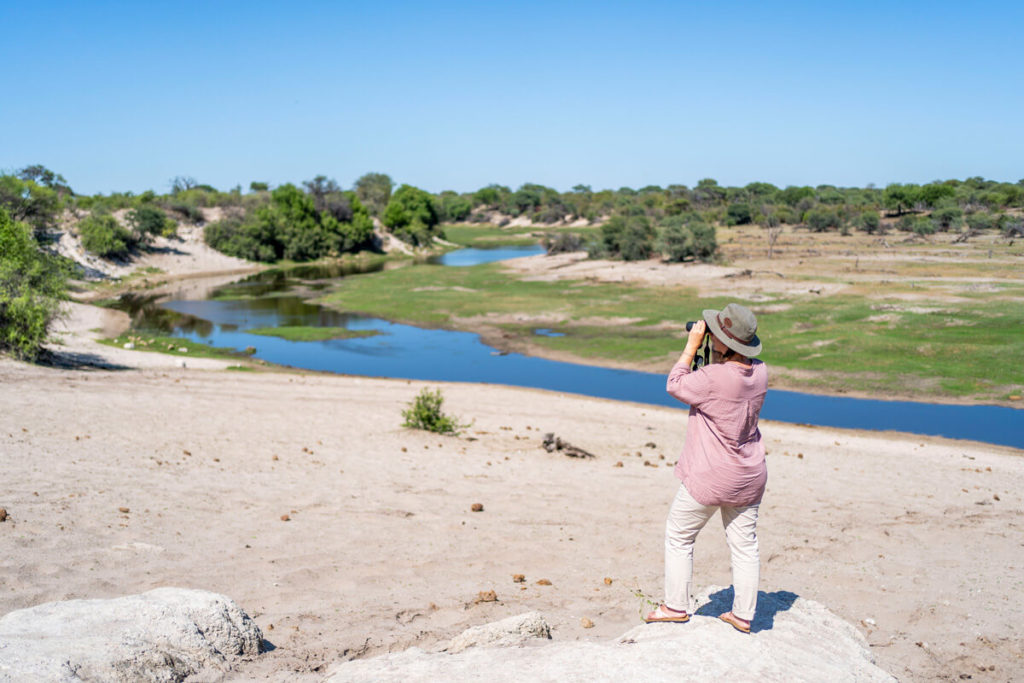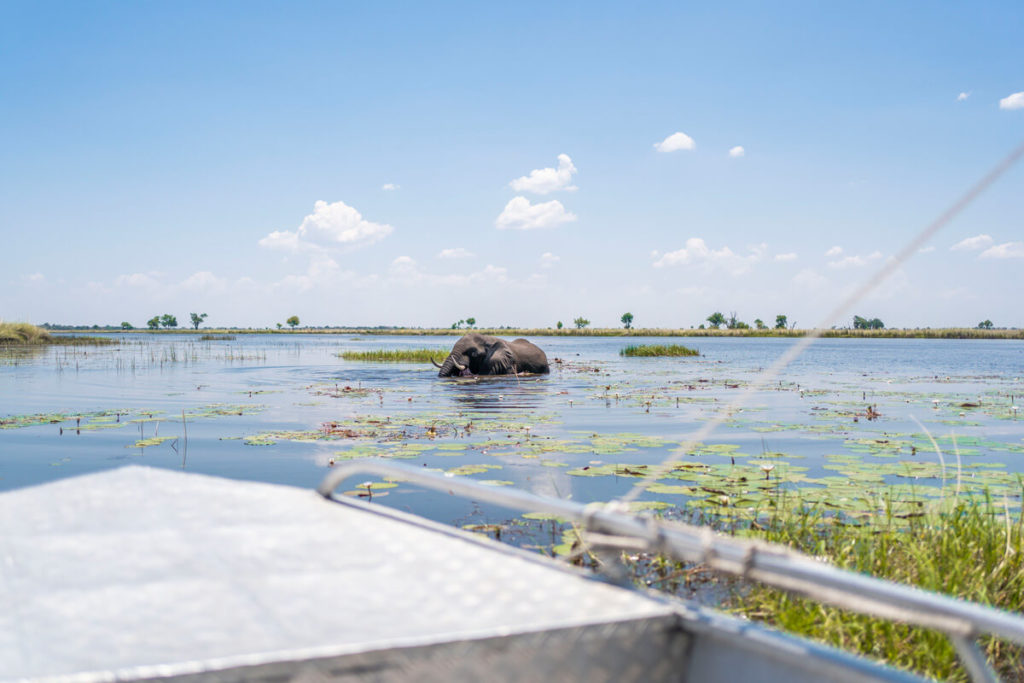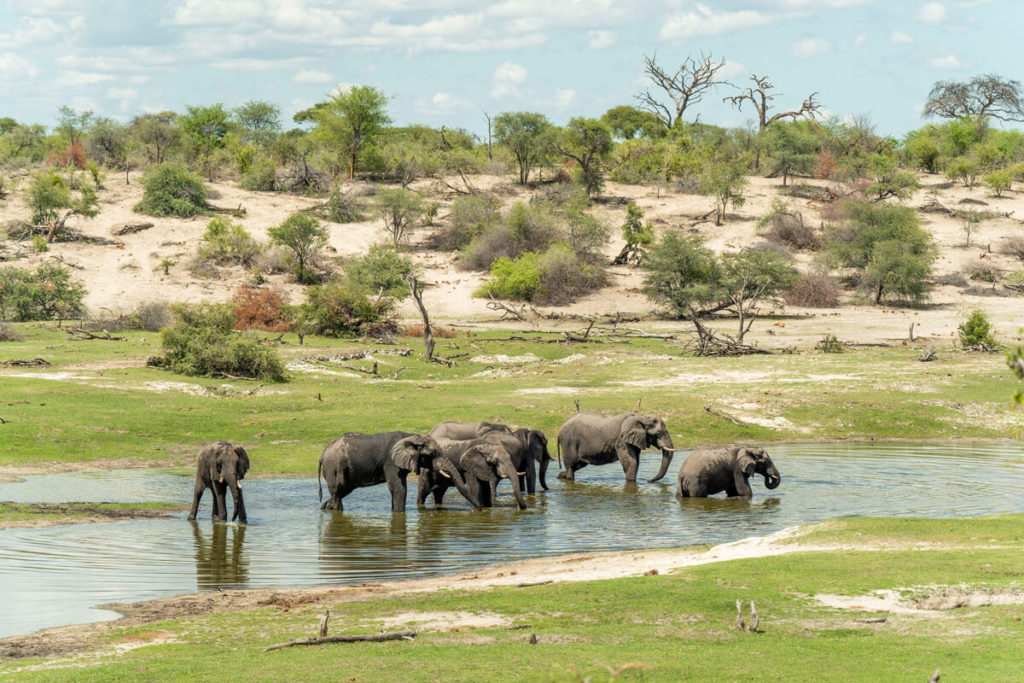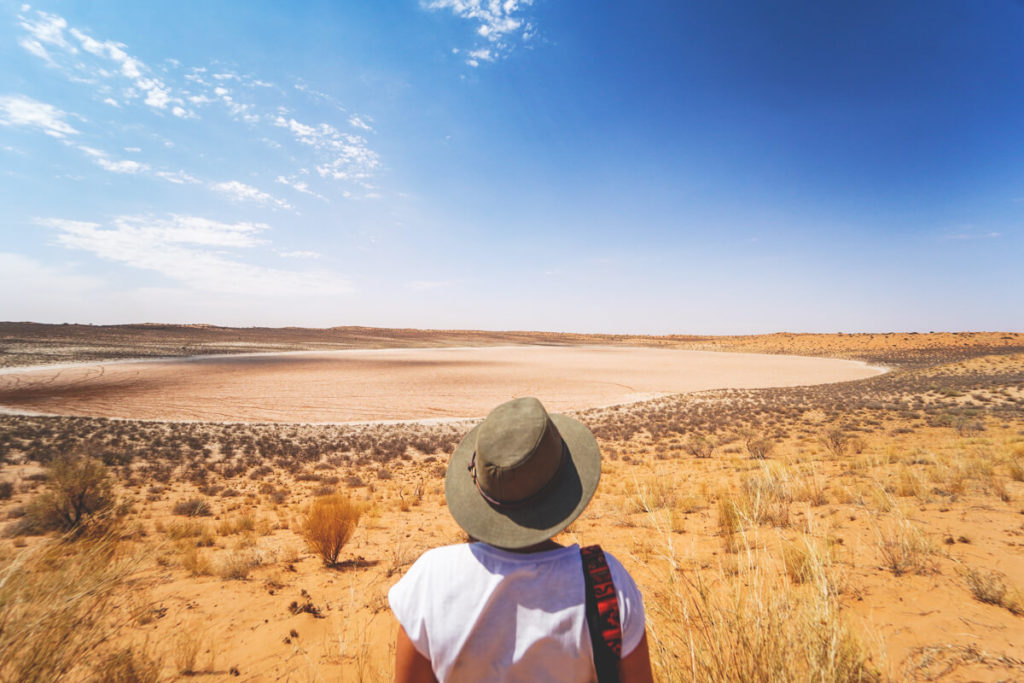Botswana is, for us, one of the most fascinating countries in Africa, particularly captivating with its high density of wildlife and stunningly beautiful landscapes. If you’re looking for an authentic and adventurous safari experience, you’ll find it in Botswana.
When planning your trip, the question naturally arises: when is the best time to travel to Botswana? The answer to this question, however, depends on various factors, including your interests, budget, and the availability of lodges and camps.
In this post, we’ll answer questions like:
When is the best time to travel to Botswana to see wildlife?
Which months are best for visiting the Okavango Delta?
☀️ What time of year is most pleasant for a safari in Botswana?
Is there a rainy or dry season in Botswana?
What time of year is best for birdwatching in Botswana?
When is peak travel season in Botswana?
When is the risk of malaria highest?
Whether you want to see wildlife, explore the culture, or simply experience Botswana’s spectacular nature, this post will help you make the best Find time for your trip.
What else you should know
- To the country page Botswana
- Costs of our Botswana trip
- The most beautiful highlights in the country
- Great accommodations & Lodges
- Travel planning for Botswana
- Our campsites
- The perfect safari binoculars
- Safari packing list for Botswana
- What else you should know
- Climate and weather in Botswana
- Best time to travel in Botswana – The regions
- Rainy season in Botswana
- Best time to travel to Chobe National Park
- Best time to travel to the Okavango Delta
- Best When to travel to Makgadikgadi Pans National Park
- Best time to travel to the Kalahari
- Best time to travel to Botswana – Our conclusion
Climate and weather in Botswana
The climate in Botswana is strongly influenced by the country’s location and topography. Botswana is located in the southern part of Africa and therefore has a subtropical climate characterized by dry and rainy seasons. The dry season lasts from May to October, while the rainy season lasts from November to April.
During the dry season, temperatures in Botswana are moderate, it is very sunny, and there is little rainfall. The humidity is low, which makes for more pleasant temperatures and also better keeps mosquitoes and other insects away. The dry season is therefore the best time to experience the wildlife and enjoy a safari to the fullest.
The rainy season in Botswana, from November to April, is characterized primarily by strong thunderstorms and heavy rainfall. During these months, the country is very warm and humid. Regardless of the time of year, when planning your trip to Botswana, you should also consider that the country is a popular tourist destination and many lodges and camps book up early (especially during the peak travel season from June to September).
Therefore, plan early and book rental cars, campsites, or lodges in advance to ensure you can experience your dream vacation in Botswana. We were in the country for 3 weeks in November 2025 and had one of the most beautiful trips there!

During the rainy season from November to April, it rains more regularly in Botswana. The grass and trees are green, and there are more watering holes for the animals. However, some roads are impassable during the rainy season, and many camps and lodges are closed. There is also a high risk of malaria during the rainy season.
It’s important to note that temperatures in Botswana vary greatly by region. In the north, where the Okavango Delta is located, it’s generally more humid and temperatures are higher than in the drier south. Overall, however, Botswana’s climate is relatively dry and hot, with an average annual temperature of around 21-25 degrees Celsius.
Best Time to Visit Botswana – The Regions
In the following table, we’ve listed the individual regions for you and noted the best time to visit each region. Of course, that doesn’t mean that all the other months don’t have their charm, too. We’ll come to that later. We were in Botswana for three weeks at the beginning of the rainy season and had an incredibly great time in this country.
Only on two days did we experience a few hours of rain, but that didn’t bother us too much. During the day, temperatures mostly ranged between 33°C and 39°C. We particularly enjoyed the lush green vegetation, the many baby animals, the fascinating birdlife, and, of course, all our encounters with other wild animals.
Rainy Season in Botswana
In Botswana, the rainy season lasts from November to April. During this time, it rains regularly, and the vegetation in the region becomes green and vibrant. The rainy season is also the birth time of wild animals such as zebras, wildebeest, and impala, making it a great time for wildlife viewing. We saw countless baby animals and took thousands of photos of them. It was simply amazing!
However, the rainy season can also present some challenges. The roads and tracks in the game reserves and national parks can be muddy and difficult to navigate, and many lodges and camps close during this time due to inaccessibility. It is therefore important to plan your trip during the rainy season carefully and be prepared for any restrictions.
Another factor to consider during the rainy season in Botswana is mosquitoes and other insects, which are more common due to the increased humidity and vegetation in the region. There is a high risk of malaria, especially in Chobe National Park and the Okavangao Delta. You should make sure you protect yourself from mosquito bites by using insect repellent and wearing long, light-colored clothing. More on this here: Malaria in Botswana – Our Top Tips & Experiences.

Advantages of the Rainy Season in Botswana
But there are also many advantages to traveling to Botswana during the rainy season. The landscape is greener and more vibrant, allowing for breathtaking scenery and spectacular wildlife viewing (especially birdlife). There are also fewer tourists in the region, which means you can travel in a very relaxed manner. We really enjoyed being able to explore the country’s many places almost alone.
Overall, the rainy season in Botswana is a great time to visit the region, as long as you prepare yourself for the special challenges. If you want to see wildlife and are willing to deal with the restrictions, then the rainy season can be a worthwhile time for you. During our tour from early to late November, we only had short, heavy rain showers on two days.
Best Time to Visit Chobe National Park
Chobe National Park is one of the most famous national parks in Botswana, known for its impressive elephant population and river cruises on the Chobe River. The best time to visit Chobe National Park depends on your interests.
If you want to see lots of elephants, the dry season from May to October (especially July, August, and September) is recommended. During this time, elephants gather in large herds at watering holes and rivers to quench their thirst. A river cruise on the Chobe River is also worthwhile to experience the pachyderms up close.

This time of year also offers a higher chance of seeing other animals such as lions, leopards, and buffalo, as they can also be found at the watering holes. Please note, however, that Chobe National Park can get very crowded during the dry season, as this is the most popular time to visit. If you decide to travel during this time, you should arrange your rental car, campsite, accommodation, and activities well in advance.
If you’re primarily interested in birdwatching in Botswana, the rainy season from November to April is the best time for you. During this time, the Chobe River is full of life, and the riverbanks are populated by a variety of bird species nesting in the green trees and bushes.
We found the rainy season in Chobe National Park to be fantastic, even though we unfortunately didn’t get to see large herds of elephants. However, we did see countless bird species and were delighted with the lush green landscape.
Best Time to Visit the Okavango Delta
The Okavango Delta is arguably one of the most famous travel destinations in Botswana. It is a vast wetland fed by the Okavango River and home to a variety of wildlife, including elephants, lions, leopards, buffalo, and antelope. The best time to visit the Okavango Delta is also during the dry season, from April/May to October. During this time, the channels do not fill with rain, but rather with water flowing from the mountains of Angola. This means that wildlife is more concentrated and easier to observe. The temperatures are also much more pleasant, and the humidity is relatively low, which makes the whole safari experience more enjoyable. In June and July, you can see the highest water level with your own eyes.

The Okavango Delta is a paradise for bird lovers during the rainy season. Between November and April, you can spot an incredible number of species nesting and feeding in this region. The most rain falls in January and February, which can make many roads impassable and many campsites inaccessible. We therefore recommend the dry season between April and October, as most roads are in much better condition.
Important: In the Okavango Delta, there is a very high risk of malaria during the rainy season (very hot and humid climate). You should thoroughly research this issue and consult your doctor about it. You should also be prepared for potentially difficult road and trail conditions during the rainy season. The dry season is recommended for off-road vehicle beginners.
Best time to visit Makgadikgadi Pans National Park
In our opinion, Makgadikgadi Pans National Park in Botswana is one of the most beautiful places in the country. The salt pans are known for their endless expanses and fascinating animal migrations. The best time to visit Makgadikgadi Pans National Park is from November/December to April. This is when you can witness the annual zebra migration, which takes place after the first rains. We were lucky enough to experience the great migration in mid-November. At this time, however, temperatures are very high, while the landscapes are lush and green. The dry season, between April and October, is of course more pleasant. During this time, temperatures are mild, and wildlife concentrates around the few permanent watering holes, making it easier to spot wildlife such as zebras, wildebeest, and lions. It’s also a great time to explore the unique landscape of the national park, as the dry climate allows for clear, expansive views of the endless salt pans. However, if you travel to this region during the rainy season, with a bit of luck you might spot the rare flamingo colony in the Nata Delta, which breeds there during the rainy season.

Best time to travel to the Kalahari
The Kalahari is one of the largest dry deserts in the world and a fascinating highlight in Botswana. During the dry season between April and November, temperatures and humidity are somewhat more pleasant, but the animals spread out in search of food, as there is hardly any surface water and no fresh pastures.
The best time to visit the Kalahari is therefore the rainy season between December and April, when the pans fill with water and the parched land is covered with plants, trees, and fresh grasses. The fresh grass and plentiful water attract many wild animals to this region, including lions, leopards, giraffes, and cheetahs.
You also have a good chance of marveling at the newborn animals. However, you should be aware that it can get extremely hot during this time (although it is almost always very hot in the Kalahari anyway), especially in December, January, and February. 40°C and more are not uncommon during this time. Dust storms can also occur, so you should always drive carefully and with foresight on the sand tracks.

The months from May to September are the most pleasant, with temperatures between 22°C and 26°C, although it is of course much warmer in the sun. Important for you too: During the summer months from May to August, it can get quite cold at night, with temperatures between 2° C and 7° C.
So be sure to pack warm clothes if you’re planning a camping trip. We were in the Kalahari in South Africa in February, and it was unbearably hot. Nevertheless, we saw many great animals, including lions, jackals, leopards, giraffes, and oryx antelopes.

Best time to visit Botswana – Our conclusion
Botswana has two clear seasons – the dry season from May to October and the rainy season from November to April. However, the best time to visit depends on your personal preferences and interests. For wildlife viewing and a pleasant safari experience, the months from June to October during the dry season are ideal. However, if you want to experience seasonal flooding, colorful birdlife, and lush green landscapes, the rainy season between November and April is a better choice.
The dry season tends to be more expensive and crowded, while the rainy season can sometimes lead to road closures due to flooding. It’s therefore important to consider all these factors in advance and adjust your plans accordingly. Overall, Botswana offers a unique travel experience year-round, and each season has its advantages and disadvantages.